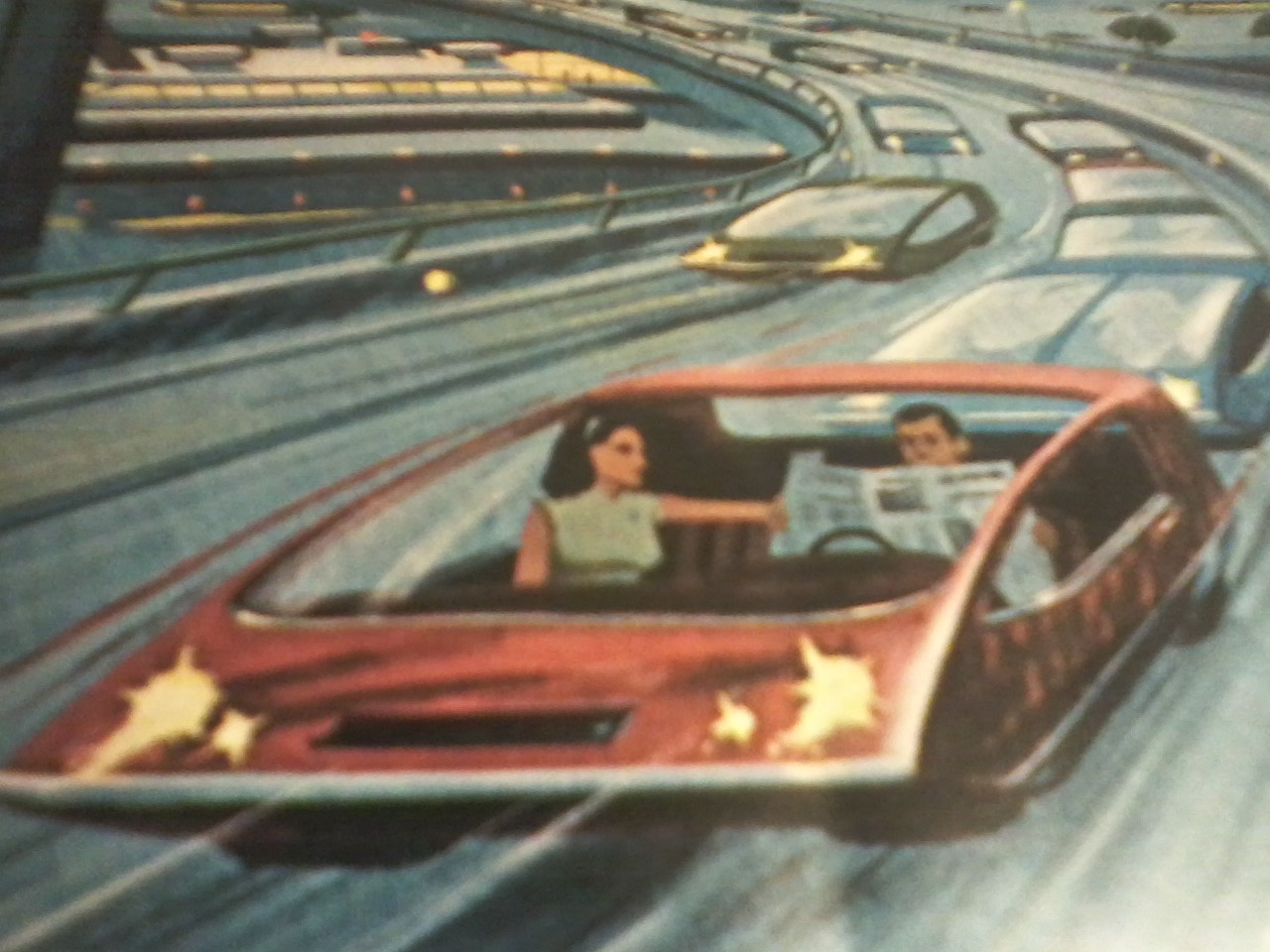Driverless cars seem more a matter of when than if, though the ETA differs wildly depending on who’s doing the talking. For the technology to be transformational, the wheel must be torn from the dash, the vehicle in control of itself 100% of the time. Otherwise, it’s a useful tool and one that would still likely reduce deaths, but it won’t be world-changing. If autonomous truly comes to pass, not only will individual vehicle ownership be unnecessary, even fleets of taxis can essentially own themselves.
From the Economist “The World If” issue, an excerpt from “If Autonomous Vehicles Rule the World“:
For a different vision of the driverless future, visit Heathrow airport outside London, and head to a “pod parking” area. Transfers between the car park and terminal are provided by driverless electric pods moving on dedicated elevated roadways. Using a touchscreen kiosk, you summon a pod and specify your destination. A pod, which can seat four people, pulls up, parks itself and opens its doors. Jump in, sit down and press the start button—the only control—and it drives you to your destination, avoiding other pods and neatly parking itself when you arrive, before heading off to pick up its next passengers.
Like riding in the autonomous Audi, travelling by pod is thrilling for the first 30 seconds—but quickly becomes mundane. The difference is that self-driving vehicles that can be summoned and dismissed at will could do more than make driving easier: they promise to overturn many industries and redefine urban life. The spread of driver-assistance technology will be gradual over the next few years, but then the emergence of fully autonomous vehicles could suddenly make existing cars look as outmoded as steam engines and landline telephones. What will the world look like if they become commonplace?
The switch from horse-drawn carriages to motor cars provides an instructive analogy. Cars were originally known as “horseless carriages”—defined, like driverless cars today, by the removal of a characteristic. But having done away with horses, cars proved to be entirely different beasts, facilitating suburbanisation and becoming symbols of self-definition. Driverless vehicles, too, will have unexpected impacts. They will look different. Early cars resembled the carriages from which they were derived, and car design took some years to escape its horse-drawn past. By the same token, autonomous vehicles need look nothing like existing cars. Already, Google’s futuristic pods are on the public roads of California, and some concept designs, liberated from the need to have steering wheels and pedals, have seats facing each other around a table.
Autonomous vehicles will also challenge the very notion of car ownership.•

